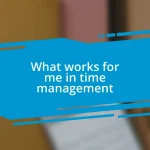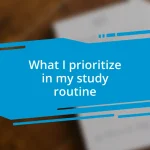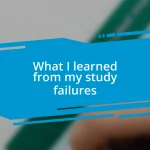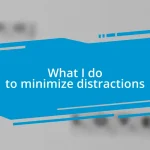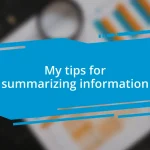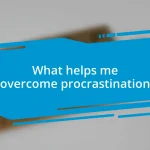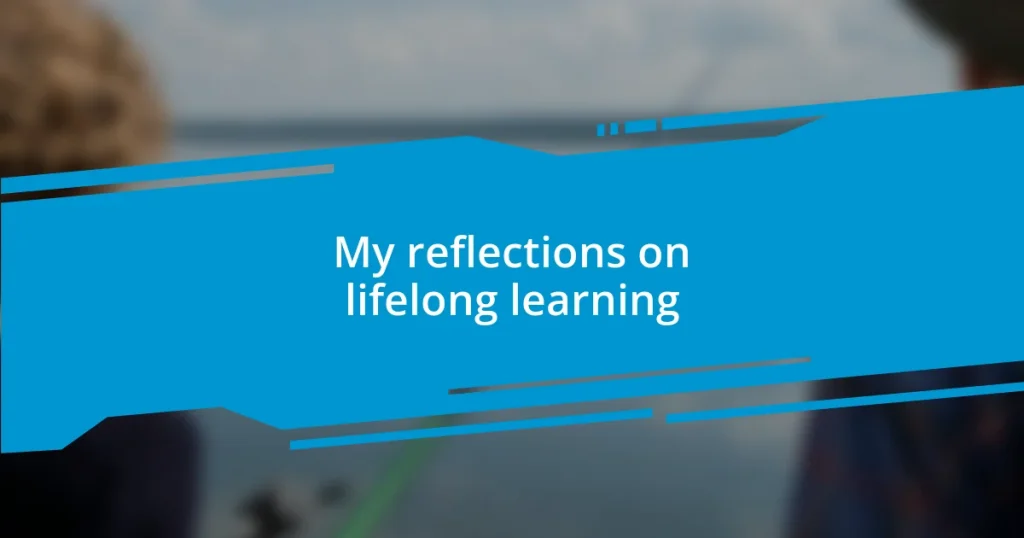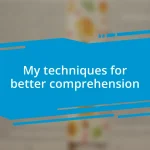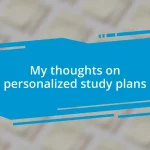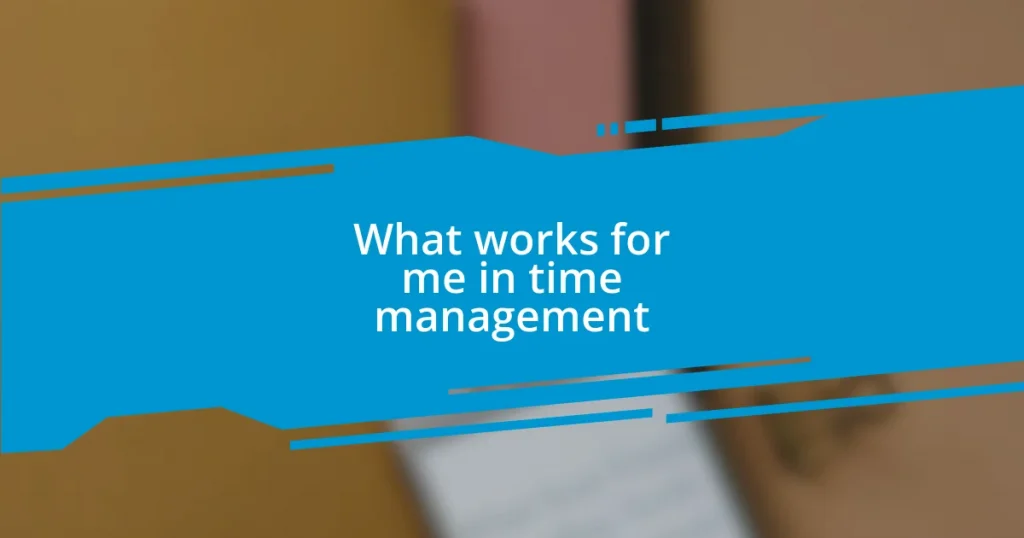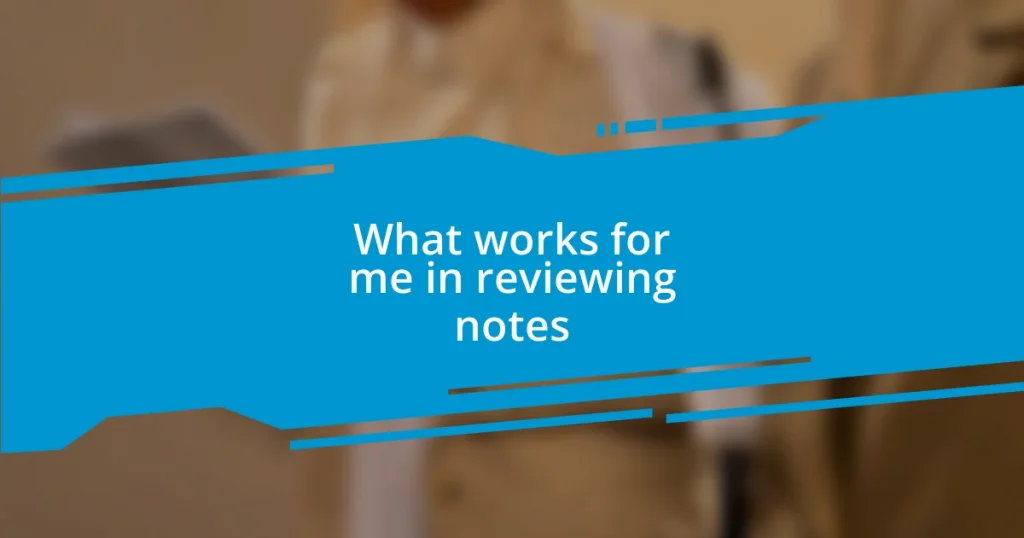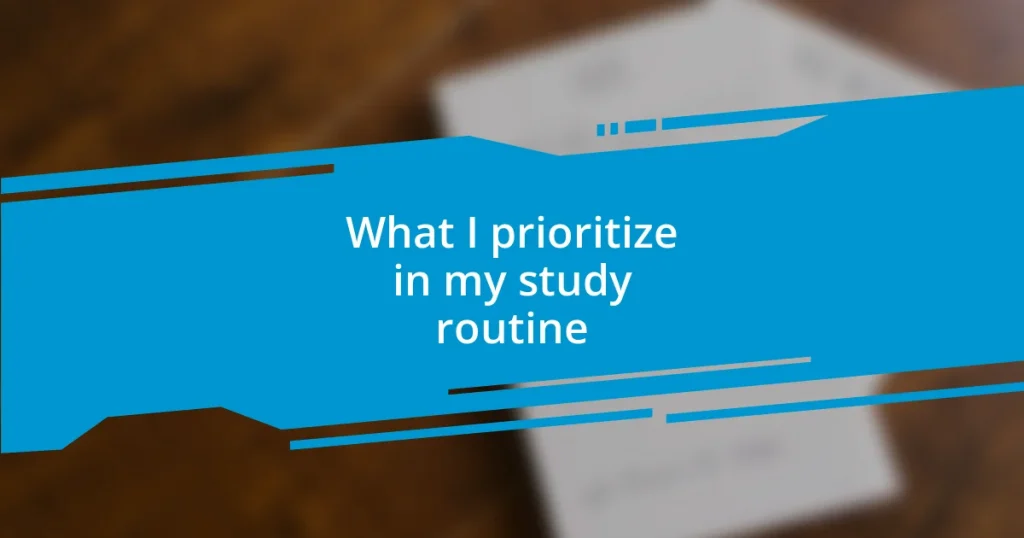Key takeaways:
- Lifelong learning enhances adaptability, self-confidence, and personal growth by encouraging individuals to acquire new skills and knowledge.
- Understanding personal learning styles—visual, auditory, and kinesthetic—can optimize educational experiences and improve collaboration in group settings.
- Incorporating learning into daily routines and building a community of learners enhances engagement and motivation, making the journey of lifelong education more fulfilling.
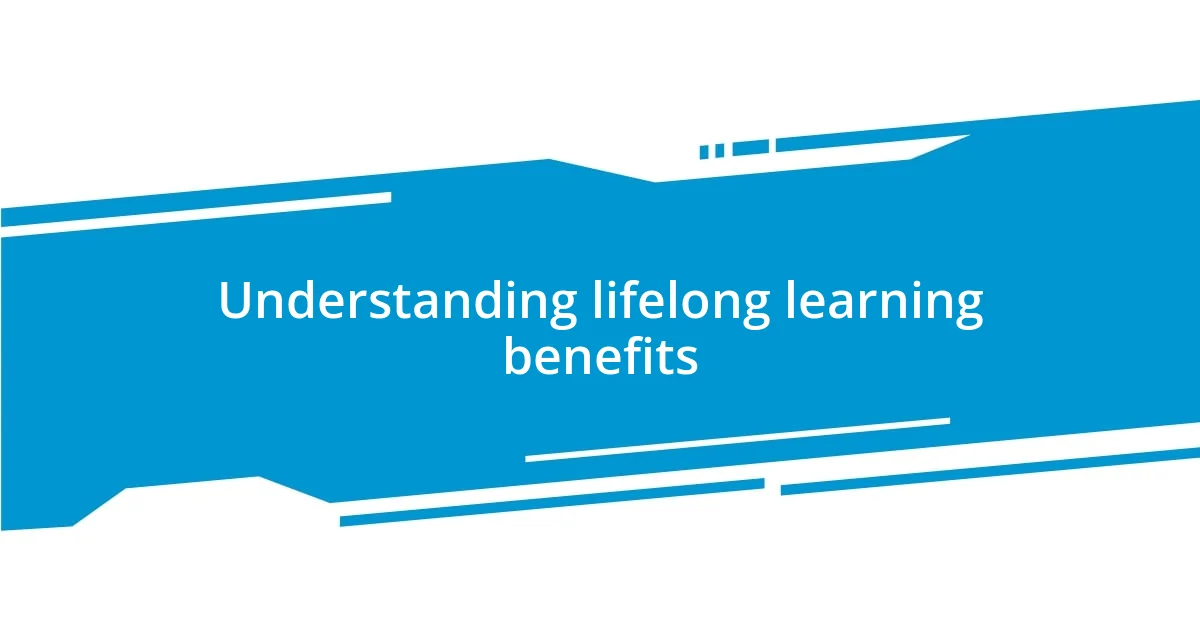
Understanding lifelong learning benefits
One of the most rewarding aspects of lifelong learning is how it fosters adaptability. I remember when I pivoted from a career in marketing to tech. The process was intimidating, but the commitment to learning new skills made all the difference. Isn’t it amazing how acquiring fresh knowledge can open doors you didn’t even know existed?
Additionally, lifelong learning enhances self-confidence. I used to shy away from public speaking, feeling unprepared and insecure. However, taking courses and practicing continuously transformed my anxiety into enthusiasm. Have you ever experienced that rush of confidence after mastering something new?
On a deeper level, lifelong learning nurtures personal growth and fulfillment. I often find myself reflecting on how each new lesson shapes my perspective and enriches my life experiences. Don’t you think that the journey of learning can be just as worthwhile as the end goal? It’s the quest for knowledge that creates a vibrant, purpose-driven life.
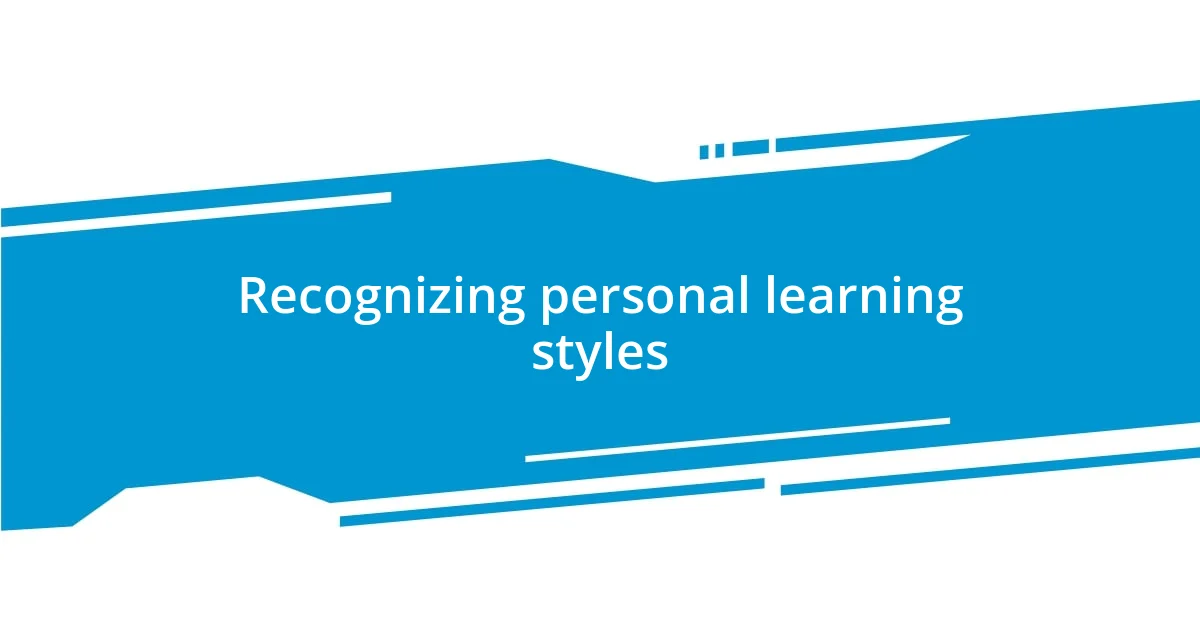
Recognizing personal learning styles
Recognizing personal learning styles is essential for making the most of our educational journeys. I once took a workshop on learning styles, a moment that really shifted my perspective. It became clear that some of my friends learn best through visuals, like videos or diagrams, while I found that I retained information better when I engaged in discussions. Have you ever noticed how different environments or methods can either enhance or hinder your understanding?
Delving deeper into this topic, I realized there are distinct categories of learning preferences: visual, auditory, and kinesthetic, among others. For instance, I thrive on hands-on experience, like when I took up cooking classes. I can still feel the excitement of creating my first perfect soufflé; that trial and error fed my enthusiasm. On the other hand, my colleague excels in auditory learning—she recalls information effortlessly as long as she listens to lectures or podcasts. Isn’t it eye-opening to think about how our brains absorb knowledge in such varied ways?
As I reflect on the importance of recognizing personal learning styles, I can’t help but think about the broader implications for collaboration and teaching. Understanding these differences in a team setting has allowed me to appreciate and support others’ learning journeys. Knowing that someone needs to see a concept to grasp it while I may prefer to discuss it ensures we can both thrive. Have you ever had a moment where recognizing your learning style changed your approach to a task?
| Learning Style | Characteristics |
|---|---|
| Visual | Prefers images, diagrams, and visual aids to understand information. |
| Auditory | Learn best through listening, such as lectures and discussions. |
| Kinesthetic | Gain knowledge through hands-on experiences and physical activities. |
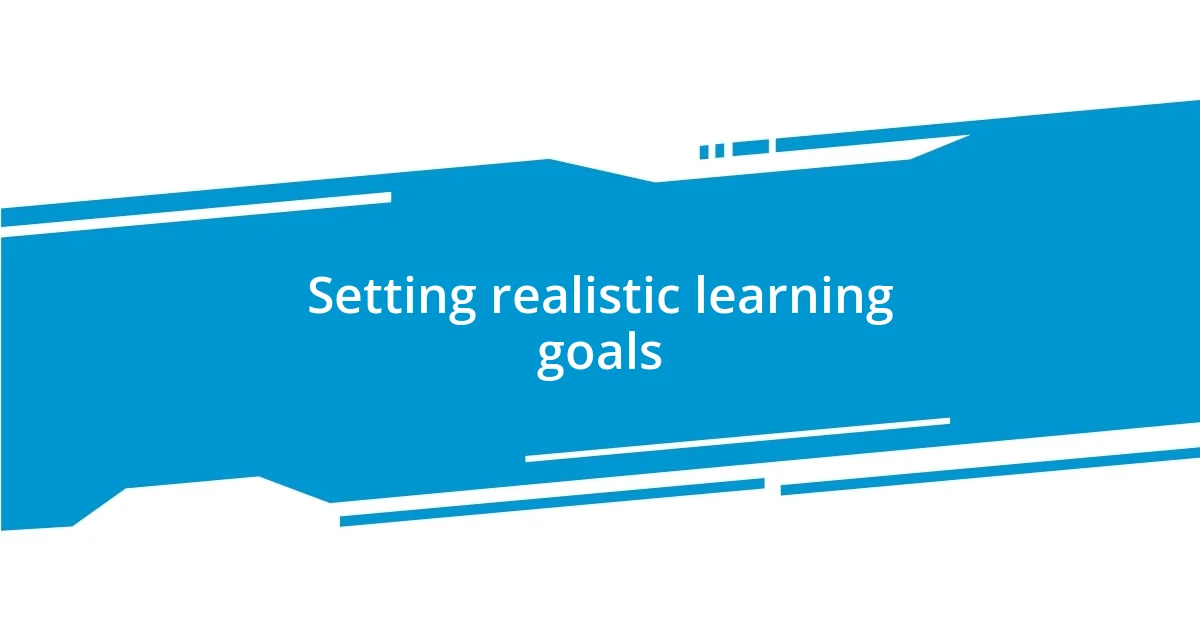
Setting realistic learning goals
Setting realistic learning goals is a crucial step in fostering a successful lifelong learning journey. From my experience, it’s vital to strike a balance between ambition and practicality. When I first tried to learn Spanish, I ambitiously aimed for fluency in six months. It was an admirable goal, but the daily grind quickly revealed its challenges. Breathing room is essential, and I soon realized that setting smaller milestones, like mastering basic conversations, made the experience enjoyable and more achievable.
To help clarify the process of setting realistic learning goals, consider these key strategies:
- Define specific objectives: Identify clear, concise targets. Instead of “learn to cook,” aim for “master five simple recipes.”
- Break it down: Divide larger goals into manageable chunks. This approach can make daunting tasks feel less overwhelming.
- Set a timeline: Establish deadlines for each goal to maintain focus and motivation.
- Reflect regularly: Take time to assess your progress and adjust your goals as needed. This reflection can be incredibly rewarding and help sustain your enthusiasm.
- Celebrate small wins: Acknowledge your progress, no matter how minor. Each achievement fuels your motivation to continue learning.
Remember, the journey is just as important as the destination, and even small steps lead to significant growth over time.
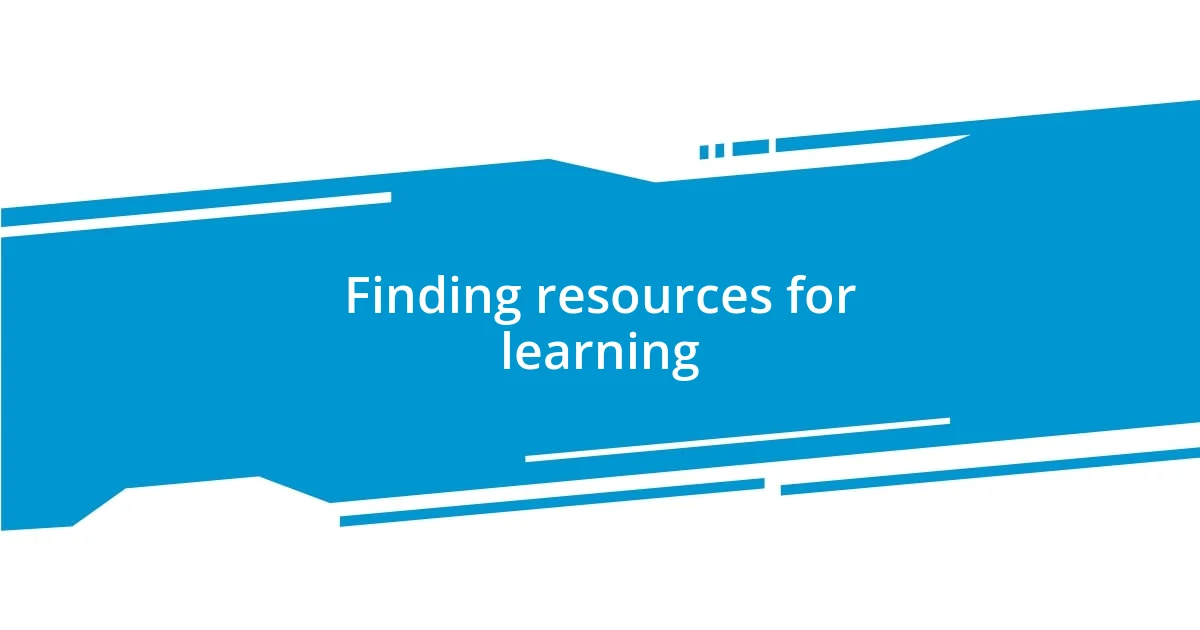
Finding resources for learning
Finding resources for learning can feel overwhelming with the sheer volume of options available today. I often turn to online platforms like Coursera and Khan Academy, as they provide excellent materials that cater to various learning styles. Just the other day, I stumbled across a course on digital marketing that sparked my curiosity, reminding me of the days I first explored entrepreneurship. Isn’t it thrilling to discover resources that not only educate but also ignite our passion?
Libraries, both physical and digital, are gems, often overlooked. I remember spending countless Sunday afternoons in my local library, pouring over books that transported me to different worlds. The thrill of finding that one book that would change my perspective or improve my skillset is something I cherish. Nowadays, services like Libby and OverDrive make it easy to access e-books and audiobooks, making the learning process more flexible and enjoyable. Have you found a resource that resonates with you in unexpected ways?
Networking with peers and mentors can also uncover valuable learning resources. When I was pursuing a certification in project management, I connected with a mentor who guided me to specific journals and online communities, enriching my understanding. It’s amazing how a simple conversation can lead to discovering tools and articles that enhance our learning experience. So, who in your network could offer insights or resources that you haven’t tapped into yet?
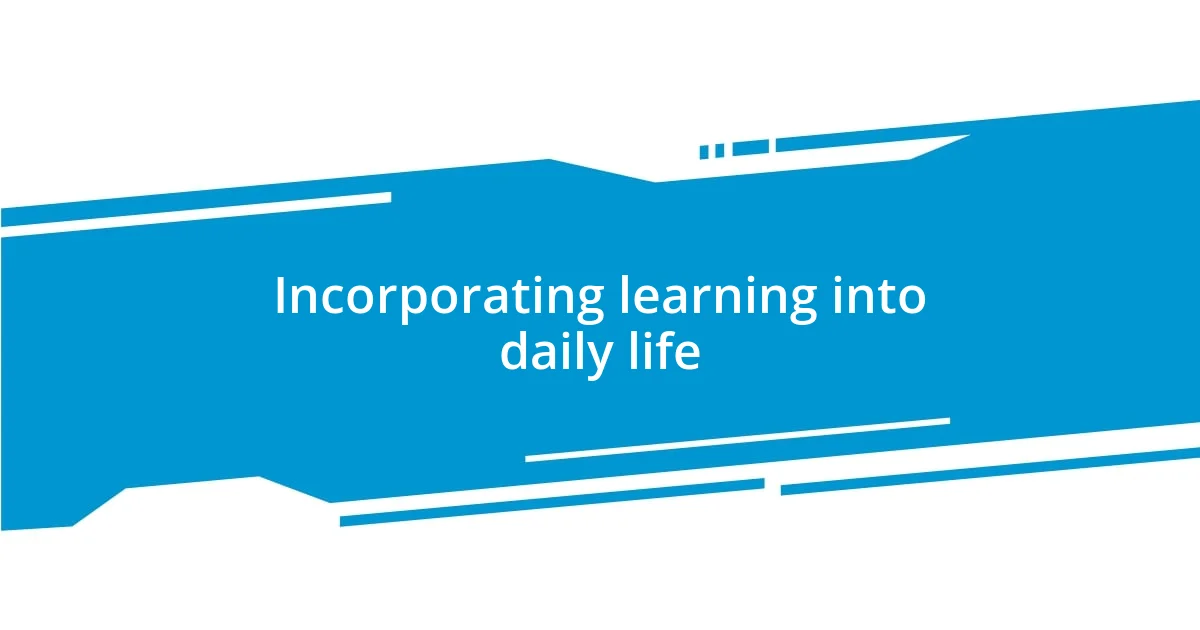
Incorporating learning into daily life
Incorporating learning into daily life can feel daunting, but I’ve found that blending it seamlessly with my routines makes it much more manageable. For instance, I started listening to podcasts during my morning commute, transforming that mundane part of my day into a learning opportunity. It amazes me how much I can absorb about topics I’m passionate about—one episode at a time.
I also discovered the joy of learning through hobbies. When I took up gardening, I didn’t just plant flowers; I turned the process into a mini-education session. Researching different plant species and their care taught me not only about nature but also about patience and resilience. Can you think of a hobby that could offer you unexpected lessons while you enjoy it?
Another approach I love is sharing what I learn with friends or family. Recently, after diving into healthy cooking techniques, I invited a close friend over for a cooking session. Teaching her what I had learned not only solidified the knowledge in my mind but also sparked lively discussions. Isn’t it incredible how sharing knowledge can deepen our understanding while connecting us more closely with others?
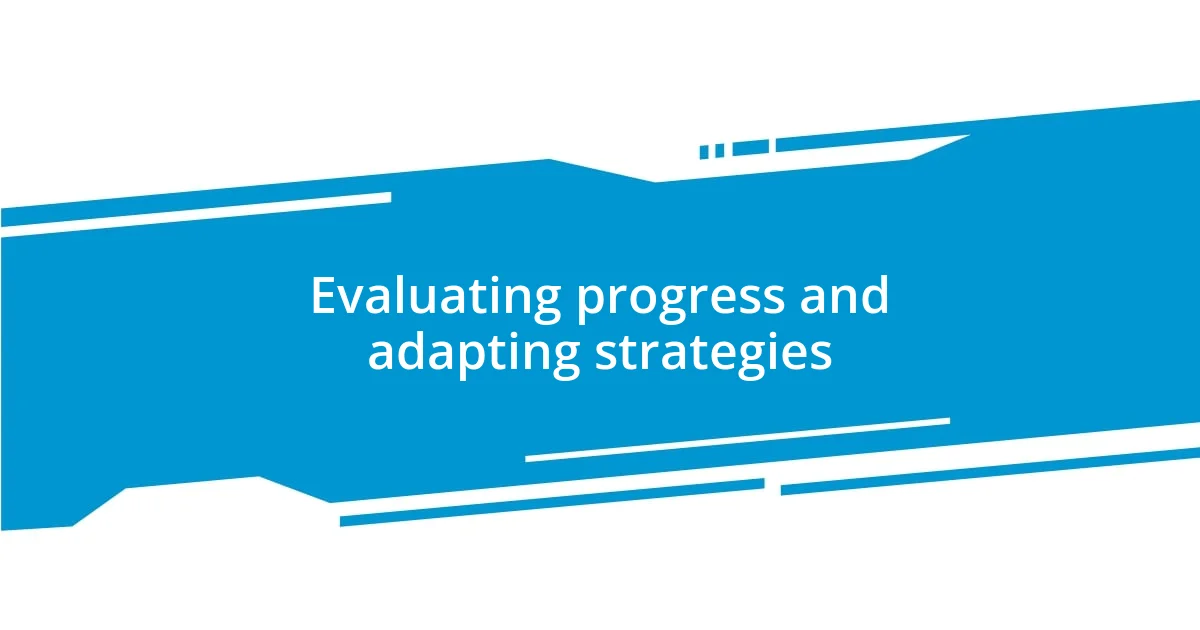
Evaluating progress and adapting strategies
Evaluating progress in lifelong learning is crucial, and I often take a step back to assess what I’ve achieved over a certain period. I recall a time when I enrolled in multiple online courses but was overwhelmed by the content. After some reflection, I realized that logging my progress helped me identify areas where I excelled and others where I needed to shift focus. Have you ever taken a moment to reflect on your learning journey and what it has taught you?
Adapting strategies becomes essential when I find my enthusiasm waning. I remember battling through a particularly dense finance textbook that left me drained. Instead of persevering blindly, I decided to switch my approach and used a series of videos instead. This simple change re-engaged my learning, underscoring the importance of flexibility in our strategies. How do you adapt when you feel stuck?
Additionally, I’ve learned the value of seeking feedback from others. A mentor once suggested I form a learning group to discuss concepts I was struggling with. Not only did this collaborative approach offer new insights, but it also motivated me to stay accountable. Have you considered how involving others in your progress could transform your learning experience?
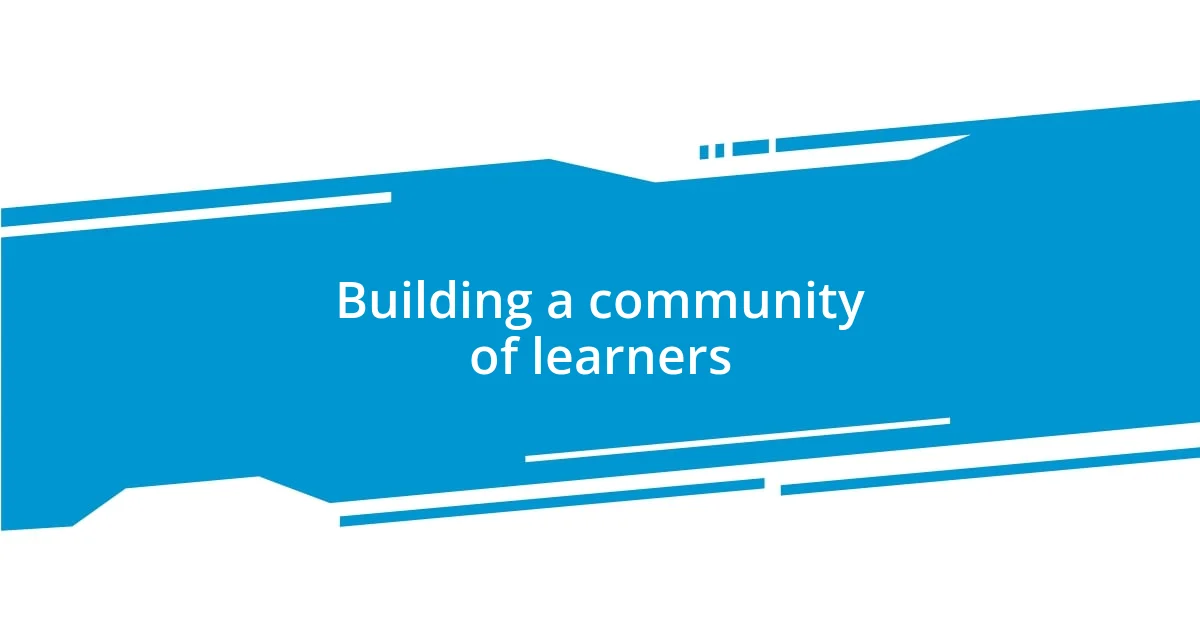
Building a community of learners
Creating a community of learners can truly amplify the journey of lifelong education. I remember the first time I joined a local book club; what started as a simple desire to read more quickly evolved into thought-provoking discussions that challenged my perspectives. Have you ever been in a situation where the insights of others enriched your understanding in ways you hadn’t anticipated?
Collaboration thrives in an environment where individuals support one another. I find it incredibly rewarding to engage in workshops where sharing knowledge isn’t just encouraged but celebrated. In one instance, we collectively tackled a challenging project, and I was genuinely surprised by how a different approach from a fellow participant totally reframed my own thinking. How often do you step back and allow others’ experiences to influence your learning path?
Moreover, I’ve noticed that online communities can provide the same sense of connection and shared purpose as in-person ones. When I participated in an online forum focusing on digital marketing, I felt a rush of excitement as individuals from diverse backgrounds came together to exchange tips and experiences. It was a blend of guidance and camaraderie that not only enhanced my skills but also made me feel like part of something larger. Isn’t it inspiring to think about the vast networks we can build, even from the comfort of our homes?

